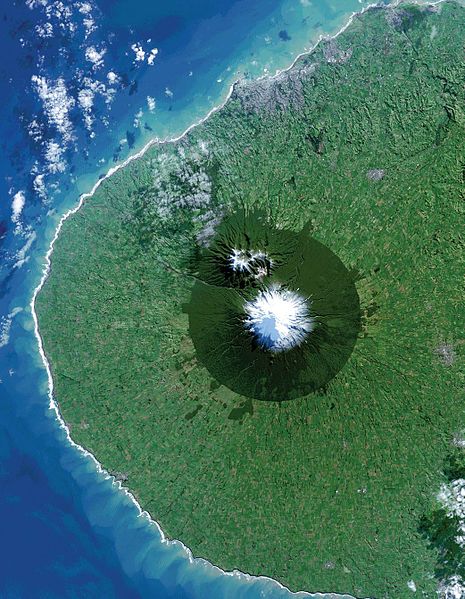Riwha Tītokowaru was a Māori leader in the Taranaki region of New Zealand. He was active in resisting colonisation in the region and after a march for peace in the region in 1867 he was a leader in a war (1868–1869) named after him in an effort to stop the occupation of Māori land by colonial settlers. After this period he again became an advocate for peace and made diplomatic efforts between Māori, colonial settlers and the government. He was arrested and jailed after a peaceful occupation of land near Manaia in 1886 and he died two years later in 1888.
Tītokowaru, 1869 engraving
Titokowaru (left) and Te Whiti during a trial of the latter in Wellington, 1886
Taranaki is a region in the west of New Zealand's North Island. It is named after its main geographical feature, the stratovolcano Mount Taranaki, also known as Mount Egmont.
Picture of Taranaki acquired from the Landsat 8 satellite, showing the near-circular Egmont National Park surrounding Mount Taranaki. New Plymouth is the grey area on the northern coastline.
View of Mount Taranaki from SLUGS , facing west. Fanthams Peak is to the left of the main peak. The cow in the foreground is emblematic of Taranaki as a major dairying region.




